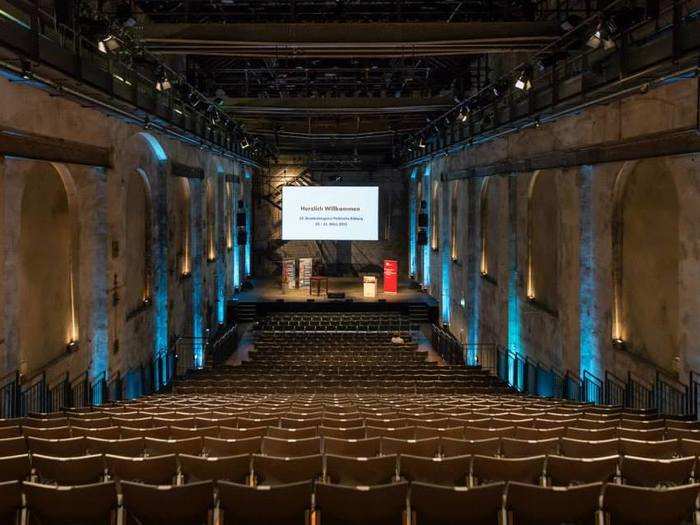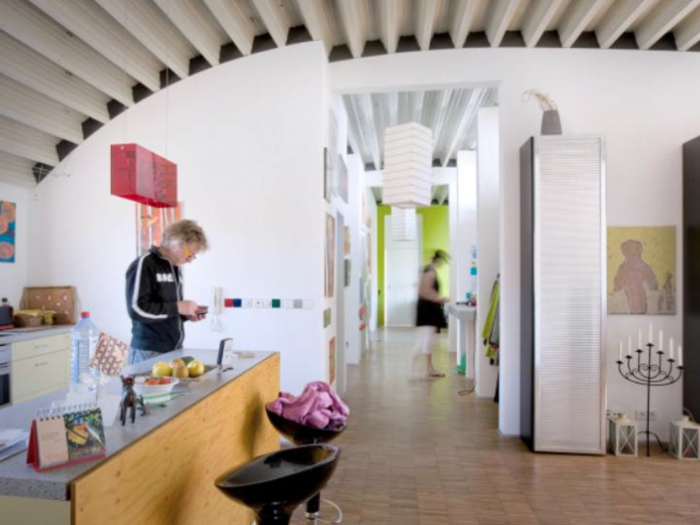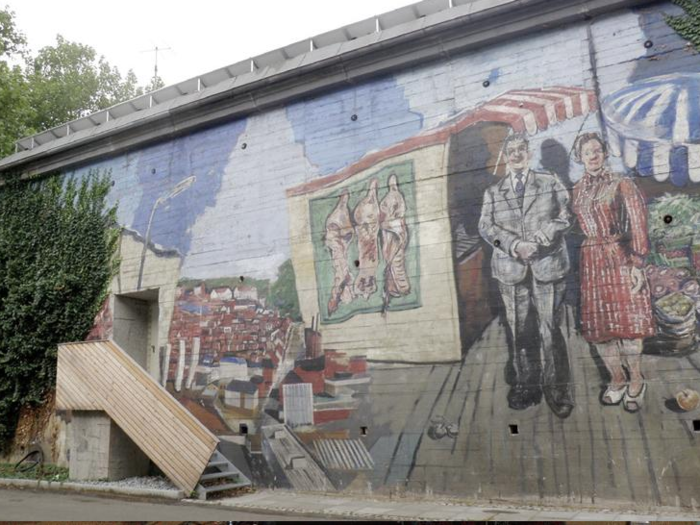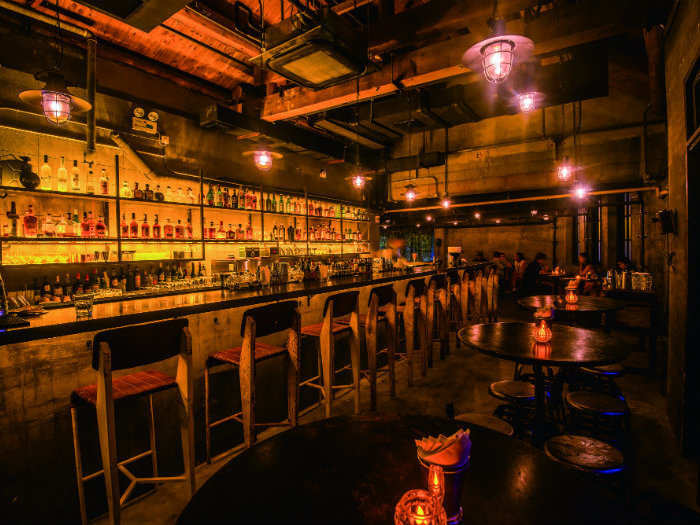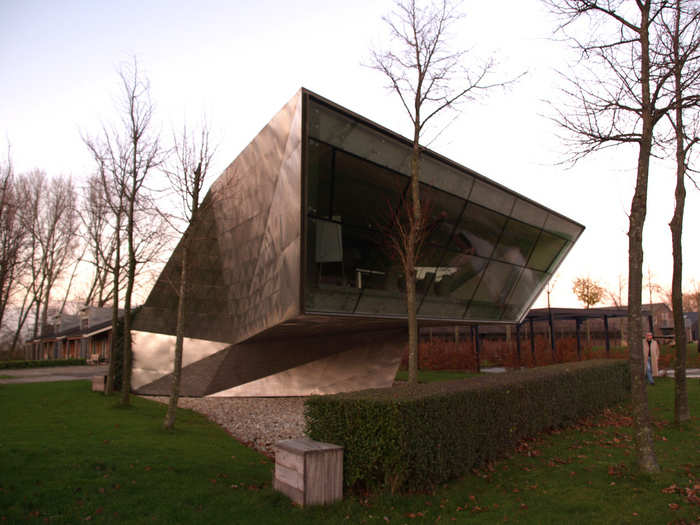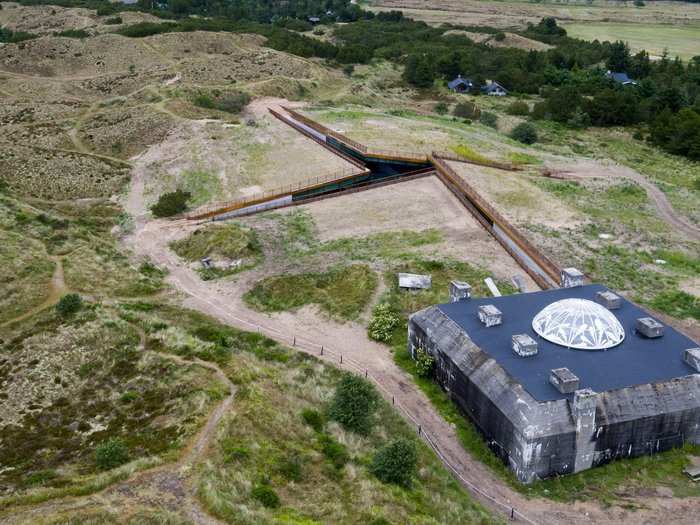A theater and co-working space in Germany
Now called Medienbunker, this former shelter was a WWII anti-aircraft tower in Hamburg, Germany.
In 2000, a film production company called PYP turned it into a theater and co-working space for companies that focus on the arts.
The building hosts graphic design and dance classes, a radio station, and a music hall. Independent filmmakers also regularly screen their works there.
An event space, restaurant, and museum in Russia
Completed in 1956, Bunker-42 stretches 75,000 square feet and lies 213 feet underground in Moscow. When it was a bunker, the complex could feed up to 3,000 people for 90 days in the event of a nuclear blast.
The bunker was decommissioned after 30 years, and in 2006, it was turned into a space that functions as a Cold War museum, karaoke bar, restaurant, wedding venue, and conference space under the same name.
A penthouse and an art gallery in Germany
Since 2000, German architects from the firm Bunkerwohnen have worked to turn six shelters into apartments and event spaces.
The penthouse pictured above is on the roof of Bunker-F38 in the Claussenstraße neighborhood of Bremen, Germany. The second floor of the building was converted into two smaller apartments, and the ground floor serves as a gallery space for art and music.
Band practice rooms in Germany
In 2009, the same architects from Bunkerwohnen turned Bunker-B35 into a space for bands to practice in Bremen, Germany.
The architects wrote on their website that the former shelter's 3.6-foot-thick walls provide ideal sound insulation for instruments. The building, featuring a mural on one of its exterior walls, has 19 rooms that bands can rent.
A speakeasy in China
China built hundreds of thousands of air-raid shelters in the 1960s and 1970s.
In 2016, an underground shelter in Shanghai re-opened as a bar called The Bunker, according to City Weekend. The venue sells craft cocktails, and the servers take orders dressed in military uniforms.
A retreat in the Netherlands
In 1936, the Dutch government built two conjoined bunkers in Vreeland, a coastal village 20 miles south of Amsterdam.
Seventy years later, local architecture firm UnStudio renovated the structure into a business retreat called the "Tea House on Bunker." It now has one large atrium with a skylight that points toward a polo field.
A farm in England
During the WWII Blitz, this bunker near the Clapham North Underground station served as a shelter for 8,000 Londoners, according to The Independent.
It laid abandoned for decades. But in 2014, agricultural startup Zero Carbon Food turned it into a subterranean farm. The team uses a technique called hydroponic farming, in which crops grow under LEDs in nutrient-rich water.
The 2.5 acre farm, located 100 feet below ground, grows vegetables like peashoots, micro radish, and mustard redleaf.
A WWII museum in Denmark
Around 200 concrete bunkers for Nazi soldiers were built along the Danish coast during WWII.
Denmark's largest was the Tirpitz Bunker, which measured 7,500 square feet and was located in Blåvand. Named after a German battleship, the bunker never saw military action. Nazi soldiers abandoned its construction in 1945.
In June 2017, architecture firm Bjarke Ingels Group transformed the partially underground building into the Blåvand Bunker Museum, where visitors can learn about the history of WWII and the Danish West Coast.

